
Opening Statement of Senator Roth
Excerpted testimony of Angelo
Lonardo,
former acting boss of the Cleveland La
Cosa
Nostra before the Permanent Subcommittee on Investigations of the Senate
Committee on Government Affairs April 4th, 1988.
Opening Statement of Senator Roth
Senator Roth: Thank you, Mr. Chairman.
These hearings I believe are exposing the changing face of organized crime.
Frankly, that changing face gives me cause for concern. On Monday, we were told
that we are facing a new generation of the LCN which differs significantly from
its predecessors. They lack respect for tradition and for the family, they have
succumbed to the influence of drugs, both as traffickers and as users. As a
result, they have become more greedy, selfish, more violent. Many have chosen to
forsake omerta, the traditional vow of silence and turn in other family members
to save their own skins.
Today, Angelo Lonardo, the son of an LCN boss and a former acting boss himself,
will confirm from the inside this new face of the LCN. On Monday, Tommaso
Buscetta, a former Sicilian LCN member, told us that these changes are not
limited to the United States. Primarily because of drugs, he said, in Italy as
well, there are no more men of honor.
While it may be true that the LCN has changed, what has not changed is the fact
that it is still here, terrorizing citizens, draining our economy, and in many
cases taking over legitimate businesses. As long as that is true, our efforts to
eliminate organized crime must continue unchanged.
Thank you, Mr. Chairman.
Senator Nunn: Thank you, Senator Roth. Mr. Lonardo, why don't you proceed.
Mr.
Lonardo:
My name is Angelo Lonardo. I am 77 years old, and I am a member of the La Cosa
Nostra. I am the former
underboss
of the Cleveland organized crime family. I became a member of La Cosa
Nostra in the late 1940's, but have been associated with the organization since
the late 1920's. When I was "made" or became a member of La Cosa Nostra, I went
through an initiation ceremony. I later learned that to be proposed for
membership in La Cosa Nostra, you would have to have killed someone and stood up
to the pressure of police scrutiny. Today, you do not have to kill to be a
member, but just prove yourself worthy by keeping your mouth shut or by being a
"stand-up" guy. However, if you are called upon to kill someone, you have to be
prepared to do it. In my case, my father was murdered by Salvatore Todaro in
1927. In revenge, my cousin, Dominic Sospirato, and I killed Todaro. This is one
of the reasons that I was proposed for membership in La Cosa Nostra.
In the 1930's. my cousin, John Demarco, and I murdered Dr. Romano, the former
boss of Cleveland, because Romano had a role in the death of my father, and we
believed that he killed our cousin on the operating table. At the time, I was
not a member of the LCN, but Demarco was. As a result of the Romano murder,
Demarco was condemned to death by the commission for killing a boss without
okaying it with the commission. I was excused for my part in the murder, since I
was not an LCN member and did not know the rules. Later, I attended a meeting
with Al Polizzi, the boss of Cleveland, in Miami, Florida. It turned out that
this was a commission meeting and that Polizzi was defending Demarco's murder of
Romano. I did not sit in on the meeting, but afterwards Polizzi told me that he
had "straightened out" Demarco's problem with the commission.
Moe Dalitz
 |
Excerpted testimony
of Angelo Lonardo, former acting boss of the Cleveland La Cosa Nostra before
the Permanent Subcommittee on Investigations of the Senate Committee on
Government Affairs April 4th, 1988. Opening Statement of Senator Roth |
|
 |
|
|
Even though a small organization, the Cleveland family became involved in Las Vegas casinos through their association with the "Jewish Boys," Maurice Kleinman, Moe Dalitz, Sammy Tucker, Tommy McGinney, who is dead, and Lou Rothkopf, also dead. In the late 1940's, Wilbur Clark began building the Desert Inn casino in Las Vegas, Nevada. Clark was in need of additional capital and eventually went into a partnership with "the Jewish Boys" in order to obtain the necessary funding to complete the construction of the casino. Kleinman, Dalitz, Tucker, McGinney, and Rothkopf were gamblers who owned the Beverly Hills Supper Club, a casino-type gambling operation in Covington, Kentucky. |
|
Dalitz and Kleinman |
During the 30's, the commission put a "freeze" on the making of new members. The
commission put the freeze on since families, especially in New York, were not
making the "right" kind of people. Some individuals were even buying their way
into the LCN. I have heard that one businessman paid $50,000 to join the LCN.
Because of the decree, I was not made into the Cleveland family until the
l940's.
John Scalish became boss of the Cleveland family around 1949. He took over for
Al Polizzi, who tired of Cleveland and retired in Florida. In 1949, the
Cleveland family had between 50 and 60 members. Scalish did not "make" any new
members, so the strength of the Cleveland family diminished as its members aged
or died. Scalish just did not want to make any new members. Even though a small
organization, the Cleveland family became involved in Las Vegas casinos through
their association with the "Jewish
Boys," Maurice Kleinman,
Moe Dalitz,
Sammy Tucker, Tommy McGinney,
who is dead, and Lou Rothkopf,
also dead. In the late 1940's, Wilbur Clark began building the Desert Inn casino
in Las Vegas, Nevada. Clark was in need of additional capital and eventually
went into a partnership with "the Jewish Boys" in order to obtain the necessary
funding to complete the construction of the casino.
Kleinman,
Dalitz,
Tucker, McGinney,
and Rothkopf
were gamblers who owned the Beverly Hills Supper Club, a casino-type gambling
operation in Covington, Kentucky.
A few years after the Desert Inn was licensed and operating, "the Jewish Boys"
gave Al Polizzi, John King, and Frank Milano a piece of the Desert Inn in
exchange for the Cleveland family's protection. During the 1970's, the Cleveland
family received money from two sources. The first source was the "skim" money
from the Las Vegas casinos, and the second was our piece of the Pittsburgh
family's Youngstown, Ohio, rackets. Our family received about $40,000 a month
from Vegas and 25 percent of the Youngstown rackets, which would average about
$5,000 per month. I did not learn about this arrangement until I became the
underboss in 1976. The skim of
the Las Vegas casinos started in the early 1970's. Starting in 1974, 1 began
receiving about $1,000 to $1,500 a month from the family, through
Maishe
Rockman. I did not know
where the money was coming from, but I suspected that it was from the Las Vegas
casinos. I learned this from various conversations that I had with Rockman.
In 1976, John Scalish died, and at a meeting at Scalish's house, Rockman told me
and Jack Licavoli, who is also known as
Jack White, that Scalish's wishes were that Licavoli become "boss" of our
family. At first, Licavoli did not want the job, but I told him to take it, as
those were Scalish's wishes. Later, Licavoli made Leo Moceri his underboss and
Tony DelSanter his consigliere. One day, I asked Licavoli if he had gone to New
York and introduced himself to Tony Salerno as boss of the family. Licavoli said
no, and that he did not know that he had to do this. I told him that it was only
right, out of respect, since the Genovese family represents us, Cleveland, on
the commission. After this conversation, Licavoli went to New York to introduce
himself as boss of our family. Later in 1976, Leo Moceri was murdered. Moceri
had been murdered on the orders of John Nardi. I became underboss after Moceri's
death. After Licavoli named me underboss, he and I traveled to New York to
introduce me to Salerno as underboss of the Cleveland family. I had known Tony
Salerno since the 1940's, and out of respect for him and the Genovese family, it
was proper to let them know of my appointment.
When I became underboss, Rockman told me the details of the Las Vegas casino
skim operation. Rockman told me that the skim started when Allen Glick
approached Frank Balistrieri about Glick's obtaining a Teamsters pension fund
loan so that Glick could purchase a Las Vegas casino. Balistrieri was the boss
of the Milwaukee family. Balistrieri talked to Nick Civella, boss of the Kansas
City family, since he controlled Roy D. Williams, who was a high official with
the Teamsters. Civella told Balistrieri that he would find someone in Cleveland
that could talk to Bill Presser. Civella got a hold of Rockman and asked him to
talk to Bill Presser about getting a pension loan for Glick. Glick told
Balistrieri that in return for the pension loan, he, Glick, would give the
Milwaukee, Kansas City, and Cleveland families a piece of the casinos. Rockman
also told me that Glick received the Teamsters pension loan and purchased the
Stardust, Fremont, and Desert Inn casinos.
[Witness consults with counsel.]
Mr. Lonardo: I do not remember about him purchasing the Desert Inn, though.
"Lefty" Rosenthal ran the skim operation in Las Vegas. Kansas City would get the
money from Las Vegas and cut it up between themselves, Cleveland and Milwaukee.
Rockman would travel to Kansas City or Chicago to obtain Cleveland's share.
Rockman controlled the money and would cut it up with Scalish's and later
Licavoli's approval. Bill Presser and Roy L. Williams received about $1500 a
month for their role in the skim. The Cleveland family received a total of about
$40,000 a month from the skim. Later, when a dispute arose in regard to the
distribution of the skim between Milwaukee and Kansas City, Chicago settled the
dispute and began receiving 25 percent of the skim. Chicago settled the dispute
since Milwaukee and Kansas City answer to Chicago, the same way Cleveland
answers to New York. To the best of my knowledge, the skim continued until at
least 1984.
Since the 1920's, my family has reported to the Genovese family in New York
City. We always had a very good relationship write the Genovese family, and that
is why they represent us on the cornmission. The Genovese family also represents
the Maggadinno and Pittsburgh families. There is a separate commission in
Chicago. Chicago has control of all of the Western families, including Detroit.
The Chicago commission makes and enforces the rules for those families and
settles inter-family "beefs." If there was a beef or problem that included New
York families with Chicago on Chicago-controlled families, that dispute would be
settled by members of both commissions having a sit-down and working out the
dispute.
Senator Nunn: Mr. Lonardo, let me interrupt you right there and ask you just one
or two short questions. Is there still a commission, to the best of your
knowledge, in Chicago?
Mr. Lonardo: Up to the time I was out, yes.
Senator Nunn: What date was that?
Mr. Lonardo: Well, I knew at the time I was in Lewisburg, and that was in 1984
or 1985.
Senator Nunn: Up until 1984, to your knowledge there still was a commission of
organized crime operating in Chicago?
Mr. Lonardo: Yes, there was.
Senator Nunn: I would ask you the same question about New York. Was there still
a New York organized crime commission that basically controlled activities of La
Cosa Nostra as of 1984-85?
Mr. Lonardo: Yes.
Senator Nunn: Since then, you cannot speak of personal knowledge?
Mr. Lonardo: I do not know.
Senator Nunn: Thank you.
Senator Roth: Could I ask just two questions related to that, Mr. Chairman?
In speaking of these commissions, the Chicago commission and the New York
commission, neither one was supreme, is that correct? Were they co-equal - did
they work together in resolving disputes?
Mr. Lonardo: If there were disputes, they would- if there was a dispute with the
West Coast family and an East Coast family, they would get together, yes.
Senator Roth: But one was not paramount or supreme?
Mr. Lonardo: No.
Senator Nunn: They were on the
same level?
Mr. Lonardo: The same level.
Senator Roth: The second question, am I correct in understanding that no member
can be put to death or should be put to death without the approval of the
appropriate commission? In other words, must a family go to his commission to
get that approval?
Mr. Lonardo: If it is a young member, they do not have to go to the commission,
but if it is a boss from the East, the eastern commission handles that.
Senator Roth: So if a so-called senior member or boss of a family were to be put
to death, the family would go to the appropriate commission to get approval?
Mr. Lonardo: The commission, that is right.
Senator Roth: Thank you, Mr. Chairman.
Senator Nunn: Thank you. Why don't you go ahead and proceed. We will not
interrupt you much, but I wanted to ask a question.
Mr. Lonardo: That is okay.
Up to 1983, when I went to jail, I knew that Tony Accardo was head of the
Chicago family and, therefore, the head of the Chicago commission. Since the
Genovese family represents the Cleveland family on the commission, I have
traveled to New York on several occasions to discuss family business. In 1976,
after the murder of Moceri, Licavoli and I went to New York to talk to Salerno
to obtain his help in murdering Danny
Greene and John Nardi. Nardi and Greene had taken a trip to New York to
see Paul Castellano about a meat business. Salerno agreed to speak to Castellano
and to have Nardi and Greene murdered on their next trip to New York. Nardi and
Greene never made a second trip to New York, so New York never helped in their
murders.
In 1977, Licavoli and I traveled to New York City to see Salerno and requested
permission to "make" 10 new members into the Cleveland family. Salerno granted
our request and told us if we needed any more members, just to let him know.
In 1981, Licavoli, Rockman, and I went to Chicago, Illinois, to see Jackie
Cerone and Joey Aiuppa about getting them to agree to support Roy L. Williams as
President of the International Brotherhood of' Teamsters, since Frank
Fitzsimmons was dying. Cerone and Aiuppa agreed on Williams, and we then
traveled to New York to see Salerno. We.called John Tronolone in Florida, and
had him set up a meeting in New York. We went to New York and saw Salerno, who
agreed with the choice of Williams and told us that he would contact his people
to line up support for Williams. We supported Williams over Jackie Presser, as
Williams was Kansas City's man and had Chicago's backing. In return, Williams
promised to make Jackie Presser the head of the Central States Pension Fund.
After Williams was elected, he went back on his word and did not name Presser.
Maishe Rockman told Presser not to worry about it and not to do any favors for
Williams.
When it appeared that Williams, who had been indicted, was likely to be forced
to step down from his position, Rockman and I made a second trip to Chicago to
get Chicago's support for Jackie Presser as Presidenit of the IBT, because he
was Maishe's protege, and it would increase the Cleveland family's prestige and
respect.
Cerone and Aiuppa had other candidates for the position and told us that they
did not want Presser because he was an informant. Maishe asked Cerone how he
knew Presser was an informant, but all he would say is that he "just knew." We
left Chicago with the promise from Cerone and Aiuppa that they would think about
Presser and let us know in a week or so.
The next day, a Teamsters official named Dominic called Rockman and told him
that Presser was “okay” with Aiuppa and Cerone. After obtaining Chicago's
support, we went to New York to see Salerno. Salerno asked if Chicago agreed to
Presser. We told him that they did, but that they thought Presser was an
informant. Rockman swore to Salerno that Presser was not an informant and
Salerno agreed to the choice of Presser as IBT President.
Later, an article appeared in the "Cleveland Plain Dealer" which said that
Presser was an informant. Presser demanded, but was refused, a retraction by the
paper. Rockman and I traveled to New York City and met Salerno at his 116th
Street Club. I explained to him about the "Plain Dealer" article and said that
the article was not true. I told him Presser had asked Rockman to attempt to get
a retraction, and asked if he could do anything about it. Salerno had "'Fish"
Cafaro call Roy Cohn. Cohn told Salerno that the owner of the "Plain Dealer" was
his client and friend. Salerno made an appointment to see Cohn. We left New
York, and a short while later the "Plain Dealer" printed a retraction.
Rockman was the Cleveland family's
contact with the Teamsters Union. The family would use the Teamsters to obtain
pension loans and to do people favors. One time, Salerno had asked Rockman to
see if he could obtain a union charter for a friend of Salerno's, and a second
time he had Rockman obtain information about a vending company in Cleveland that
a friend of Salerno’s wanted to buy. As I stated earlier, we also used the
Teamsters Central States Pension Fund to obtain a loan for Glick so that we
could skim the profits from their casinos.
As I stated previously, the Genovese family looks out for the Eastern
families-aside from the other four the other four New York City - and Chicago
takes care of the Western families. I knew that Anthony Scotto and Tony
Anastasio used to run the waterfront for the Gambino family
In the early 1980's, I knew Salerno to be the boss of the Genovese family and
also knew that Vincent Gigante (The Chin) was the consigliere and was being
groomed to be the boss. I know that Salerno had a great deal of respect for
Benny "Squint" Lombardo and frequently sought his counsel on family matters.
Mr. Chairman, I have been in the Mafia most of my adult life. I have been aware
of it ever since I was a child in Cleveland. It has changed since I first joined
in the 1940's, especially in the last few years with the growth of narcotics.
Greed is causing younger members to go into narcotics without the knowledge of
the families. These younger members lack the discipline and respect that made
"This Thing” it as strong as it once was.
At the same time, the Government has successfully convicted many members,
including most of the Cleveland family. However, this does not mean that La Cosa
Nostra is finished in Cleveland or elsewhere. Many of the made "members", such
as Anthony Liberatore, Tommy Sinito, and others, will be released in the next
few years. In addition, there are many young men who are still in Cleveland who
would have been "made” if we had had the time to do so before we were
incarcerated.
Senator Nunn: Thank you, Mr. Lonardo.
Let me ask you just the definition of a term or two here. You used the term
"made." Would you tell us what being "made" means?
Mr. Lonardo: Well, when you join the LCN.
Senator Nunn: When you are officially made a member?
Mr. Lonardo: That is right.
Senator Nunn: Being "straightened out" means the same thing.?
Mr. Lonardo: Yes.
Senator Nunn: You used the term "straightened out." When you "straighten someone
out,” that means you have made him a member?
Mr. Lonardo: Yes.
Senator Nunn: Where did that term originate? They always use these two
interchangeably?
Mr. Lonardo: They always said it that way, yes.
Senator Nunn: Mr. Lonardo, you have broken with La Cosa Nostra's code of
silence.
Mr. Lonardo: Yes.
Senator Nunn: You have cooperated with the Federal Government.
Mr. Lonardo: Yes, I did.
Senator Nunn: Tell us why, why did you break the code of silence?
Mr. Lonardo: I was convicted and got life with no parole, plus 103 years. I know
I will never get out of there alive and I miss my family very, very much.
Senator Nunn: How much of your sentence did you serve in prison?
Mr. Lonardo: Well, I was in altogether about 18-19 months.
Senator Nunn: Had you served any other time prior to this in the penitentiary?
Mr. Lonardo: Yes, I did.
Senator Nunn: How much time?
Mr. Lonardo: Twenty-three months.
Senator Nunn: When was that?
Mr. Lonardo: In 1942.
Senator Nunn: You mentioned in your statement at the end that organized crime
now is different from what it was in the 1940's. You mentioned that now there
are so many La Cosa Nostra members going into narcotics. When did that start
changing?
Mr. Lonardo: I really cannot answer you when, but it must have been the late
sixties or seventies.
Senator Nunn: The late sixties or seventies.
Mr. Lonardo: Before that, the higher-ups had told all the members that they
could not handle any sort of dope.
Senator Nunn: Now, was that a breakdown from the bottom up? Did the soldiers
start getting into narcotics, or did the commission itself, the top bosses,
decide that narcotics were okay?
Mr. Lonardo: It was not the bosses. It was the younger ones.
Senator Nunn: You were the boss in Cleveland, is that right?
Mr. Lonardo: I was.
Senator Nunn: Did you ever give permission for people in the organization to be
involved in narcotics?
Mr. Lonardo: We told them they could not do it.
Senator Nunn: You were convicted, though, of narcotics, right?
Mr. Lonardo: I was, but I was an innocent victim. I was an innocent man. I was
thrown into that trap.
Senator Nunn: You were not guilty of that, the crime of which you were
convicted?
Mr. Lonardo: I was not…
END excerpted testimony
'Showplace' pulled them in
By Paul A. Long, Post staff reporter
Since 1971, the Beverly Hills Supper
Club had been a magnet. People came from hundreds of miles around to
sample the good food, fine wine and national entertainment in the dining rooms,
receptions rooms and showrooms.
It was the ''Showplace of the Nation,''
the largest supper club between Las Vegas and the East Coast. After they bought
it in 1969 for $420,000, Richard Schilling Sr. and his sons Richard, Ron and
Scott, renovated and enlarged it.
Northern Kentuckians were well acquainted with Beverly Hills. If you lived here
at the time, you either worked at the club or knew someone who did. If you had
never been there, then your parents, your boss, or your kid's teacher had. It
was where you celebrated your anniversary, your birthday, or your promotion.
The dinner-and-a-show tickets included performances by stars such as Joey
Heatherton, the Van-Dells, and Frankie Valli and the Four Seasons.
The night it caught fire, an estimated 2,400 to 2,800 people were at the club.
The headliner that Memorial Day weekend was John Davidson, a clean-cut
television star popular with older audiences. Davidson liked to mix with the
crowd, pick out those celebrating their 25th or 50th wedding anniversaries and
sing songs from their era.
Mothers and grandmothers swooned over the attention from the handsome young
star, who would not make it to the stage that nigh. Davidson was waiting for the
opening act to end so his show can begin when the announcement of a ''small
fire'' was made and people began to leave the club.
Publication date: 05-24-97
8 p.m. - On a warm, Saturday night on Memorial Day weekend, the Beverly Hills Supper Club is crowded with between 2,400 and 2,800 people.
8:15 - Patrons in the Zebra Room begin complaining about the heat.
8:35 - The wedding reception in the Zebra Room at the front of the club breaks up early. The room is hot, and the consensus is that the air conditioning must be on the fritz. But behind the walls and the thin plywood paneling, the disaster is beginning. The wiring is smoldering.
8:50 - A reservations clerk smells smoke. She follows the aroma to the Zebra Room, opens the door and sees the fire. She alerts a fellow bartender, who grabs a fire extinguisher. He immediately returns, tells a waitress to call the fire department, and yells, ''Let's get the people out of here.''
9 p.m. - Wayne Dammert, the banquet captain, begins to lead some 220 people from the Crystal Rooms upstairs. The fire has spread up the spiral stairs, blocking off the main exit. Dammert leads the group through the kitchen to safety.
9 p.m. - In the Cabaret Room, busboy Walter Bailey jumps on stage to announce a ''small fire'' and ask people to leave. Many stay where they are, thinking it is part of the Jim Teeter and Jim McDonald comedy act.
9 p.m. - The headliner, John Davidson, is waiting for the opening act to end so his show can begin.
9:01 - The Campbell County dispatch center logs the first call - a fire at the Beverly Hill Supper Club.
9:02 - The fire is roaring down the corridor through the Crystal Room. Smoke comes in the air ducts, quickly filling the room with thick, oily black smoke. A fireball sweeps inside. Panic ensues. Some 1,200 screaming people are pushing toward the three small exits, throwing chairs and tables out of their paths. Some are climbing from table to table, stepping over others.
9:15 - The lawn outside the club begins to fill with gasping, singed patrons who have escaped. Inside, many are trapped inside the Cabaret Room.
9:25 - The fire grows in strength. Wooden timbers beging crashing inside. The glow from the windows resembles an burning furnace.
9:45 - Lifeless bodies are pulled from the Cabaret Room.
10:15 - The fire is at full strength. Rescue units from throughout the area converge on Southgate. The streets are blocked off to all but emergency vehicles.
10:40 - The full extent of the tragedy is becoming apparent. Bodies are covered with turquoise sheets. Three people are arrested for stealing from the dead bodies.
11:15 - Five people, presumed dead, emerge alive from the club, which is still burning.
12:10 a.m. - Firemen confirm 120 dead.
12:25 - The building is collapsing as the fire continues to blaze.
1:16 - The first bodies are brought to the temporary morgue set up at the Ft. Thomas Armory.
2 a.m. Although a few, small, stubborn fires remain, fireman have the blaze under control. By morning, all that is standing is the front facade and some outside walls.
By Paul A. Long and John C.K. Fisher, Post staff reporter

Wayne Dammert is a calm, soft-spoken man not given to hyperbole.
But the anguish in his voice is evident as he recalls the night of May 28, 1977, when the Beverly Hills Supper Club in Southgate burned to the ground and claimed the lives of 165 people.
''Why did it have to happen during the biggest night of the year? Why couldn't it have happened at 4 in the morning?'' said Dammert, 60, a banquet captain at the club who last year completed a book about the fire.
It was a warm Saturday night on Memorial Day weekend 1977, and the Beverly Hills Supper Club was hopping.
Upstairs in Crystal Rooms 1, 2 and 3, about 100 people from the Greater Cincinnati Choral Union were finishing their dinner and fashion show. The 100 or so members of the Afghan Hound Club of Southwestern Ohio were just sitting down to eat in Rooms 4, 5 and 6.
Dammert was in charge of the Crystal Rooms and had the responsibility of caring for 220 customers and employees on the second floor of the club.
Elsewhere in the sprawling building, perched on a 1 1/2-acre hill in Southgate overlooking the Cincinnati skyline, the Savings & Loan League of Southwestern Ohio and Northern Kentucky was holding an awards banquet.
On the ground floor, in the Zebra Room at the front of the club, a wedding reception was breaking up early. The room was warm, almost hot. The consensus was that the air conditioning was on the fritz.
It was about 8:30 p.m., and behind the walls and the thin plywood paneling in the L-shaped room the disaster was beginning. Unseen, the wiring was smoldering.
It would take less than an hour before the full extent of the horror was apparent. In the coming weeks, months and years, another horror would become apparent: The deaths could have been prevented.
Experts who have studied the fire cite a fatal combination of problems:
Exits. In an investigation after the blaze, the National Fire Protection Association found several major code violations, including inadequate exits and improper construction materials.
''The Life Safety Code in effect in Kentucky at the time of the fire could have avoided this large loss of life if it had been applied,'' the NFPA said.
The lack of exits was acute in the Cabaret Room, where most of the victims were found.
Toxic fumes. Most of the victims died from smoke and a mixture of gases created when the fire consumed flammable materials such as seat cushions.
Dammert, the banquet captain, recalled seeing dozens of bodies that weren't burned or covered with soot. The victims had died from smoke inhalation.
''They looked like they were asleep because they were clean,'' Dammert said.
Sprinklers. The nightclub didn't have sprinklers. After 1977, public-assembly buildings holding 300 or more people were required to have automatic sprinklers.
Aluminum wiring. Victims' attorneys believed old-technology aluminum wiring overheated in the Zebra Room and caused the fire. In 1985, after an 11-week civil trial in Ashland, a federal jury agreed. The product has since been taken off the market.
Stan Chesley, the Cincinnati lawyer who eventually won $50 million in settlements for the victims, believes the wiring smoldered before flames burst out. That would explain why Dammert, who was in the Zebra Room at 8:35 p.m., didn't notice anything unusual before returning upstairs to the Crystal Room.
By 8:50 p.m., a reservations clerk smelled smoke. She followed the odor to the Zebra Room and opened the door.
''All I saw was smoke,'' the unidentified woman later told investigators. ''Hot, hot, hot . . . It singed my hair.''
She alerted a fellow bartender, who grabbed a fire extinguisher and went down the hallway. The Zebra Room was ablaze. The bartender immediately returned, told a waitress to call the fire department and yelled, ''Let's get the people out of here.''
The fire roared up the spiral stairs, blocking off the main exit to the 200 or so people directly upstairs in the Crystal Rooms. After several false starts, all but two of those people escaped through the kitchen with their lives.
''In the early stage of the fire, there was evidently little panic,'' said a report in the January 1978 edition of Fire Journal. ''Despite the confusion, employees managed to warn patrons, . . . and patrons began to leave the building.
''Except the patrons in the Cabaret Room.''
Inside the Cabaret Room, on the other side of the building, no one knew about the impending catastrophe. Although the legal occupancy in the room was set at 511, between 1,200 and 1,300 people were waiting for the show to start.
Thick cigarette smoke billowed in the air. People were excited, glad to be inside, even if they were seated at tables shoved together or on the chairs hastily set up along the ramps to the stage.
Outside the room, in the long narrow hallway, more people stood in line, waiting to get inside - waiting, perhaps, for a good seat for the second show.
Although the crowd inside was laughing at the antics of the comedy team of Jim Teeter and Jim McDonald, they were really there to see John Davidson, the night's headliner, a clean-cut television star popular with older audiences.
Seconds after 9 p.m., Walter Bailey, a teen-age busboy who was one of the few at that end of the building who knew about the fire, decided to take action. He jumped on stage to announce ''a small fire'' and asked people to leave.
While some stayed where they were, thinking it was part of the act, hundreds arose and, directed by club employees, began moving toward three small exits.
Things quickly became deadly serious. The fire, taking the course of least resistance, raced down the long corridor between the Zebra Room and the Cabaret Room. The room filled with thick, oily black smoke that seeped through the air ducts.
''I looked over my left shoulder, and I heard a big whoosh sound,'' said one survivor. ''There was flame and smoke, and it just rolled into the room and it was the blackest smoke I'd ever seen . . . If you could just take oil and just get it to roll in midair, then that was the way the smoke was.''
A fireball swept inside the room.
As the lights flickered on and off, panic took hold. People screamed, pushing toward the exits, throwing chairs and tables out of their paths. Some climbed from table to table, stepping over others.
Eventually, the temperature in the Cabaret Room would hit 2,000 degrees.
Many died from smoke inhalation. Others were caught inside the Cabaret Room until intense flames burned flesh from bones and melted bodies together.
Outside, the scene resembled one of the disaster movies that were popular at the time. Sirens screamed. Flames shot hundreds of feet high, the water sprayed from fire hoses having no more effect than a child's water pistol.
Hundreds of people sat on a hill overlooking the formal gardens, wondering what had happened to their pleasant evening out. The injured lay scattered on the ground, lying next to the dead. A fireman, attending to a lifeless body, screamed for oxygen. Dazed, soot covering their best clothes, men and women called out for their spouses, their friends, their children.
The fire burned for five hours before it was declared under control, yet it smoldered into the next day. Dawn revealed the physical devastation: All that was standing was the front facade and some outside walls.
A special morgue was set up at the nearby Ft. Thomas Armory, and officials began identifying the bodies.
Of the 162 people who died that night, 160 had been in the Cabaret Room. The Wednesday after the fire, two bodies were discovered upstairs. The two women had been trapped in a makeshift dressing room.
Over the next several months, three more people would die from their injuries, bringing the death toll to 165. It was the third-worst fire disaster in U.S. history - the worst since 1942, when 491 people died in Boston's Cocoanut Grove nightclub.
Publication date: 05-24-97
BY TERRY FLYNN
The Cincinnati Enquirer
 |
Vanished luxury: Richly decorated walls, brocade chairs and
crystal chandeliers were a hallmark of the opulent dining rooms at Beverly
Hills such as the Empire Room shown here. The Beverly Hills Supper Club was a mecca for high-roller gamblers and a stage for well-known performers. It had all the glitz and glamour that would one day define the Las Vegas Strip. Perched atop a hill in Southgate, just a mile or so from the fleshpots and bustout joints of Newport, Beverly Hills was the place to see and be seen, whether you gambled or not. |
In its later years, after crime-busting
U.S. Sen. Estes Kefauver,
Campbell County Sheriff George
Ratterman and U.S. Attorney
General Robert Kennedy had run the gangsters and gambling out of Northern
Kentucky, Beverly Hills was still the No. 1 night spot in Greater Cincinnati.
Joyce Macke of Covington, a stockbroker, former political candidate and
Covington School Board member, remembers its glory days in the 1950s. She was
part of the glamour.
A Beverly Hills showgirl and dancer, Mrs. Macke (Joyce Miller back then)
rubbed elbows with movie stars and mobsters.
''People dressed to go to Beverly Hills,'' she said recently as she went through
a photo album from her performing days. ''You saw lots of furs and diamonds. The
men wore suits and the women wore evening gowns. It was very classy, very
attractive. Everyone was enjoying themselves.''
Mob backed
Although the employees and performers knew there was a
syndicate connection with the Beverly
Hills operation, Mrs. Macke said there was never a hint of anything out
of line.
''The club was run on a totally professional level,'' she said. ''The gambling
was there in the casino for those who wanted it. But a lot of the local people
who went to Beverly Hills didn't go to the casino. There was a bingo every night
between shows, and most people liked to play the bingo cards.''
Built in 1937
Beverly Hills was built in 1937 by Northern Kentucky entrepreneur Pete Schmidt,
who would
Pete Schmidt
later build the Playtorium on Fifth Street in Newport that today is the site of
The Syndicate restaurant.
 |
According to
oldtimers involved in Northern Kentucky gambling and entertainment before
World War II, the mob saw the potential in Beverly Hills and wanted to buy
it from Mr. Schmidt. He refused, and the building mysteriously (or not so
mysteriously) burned in the late 1930s. |
Mr. Schmidt rebuilt, but continued pressure finally convinced him to sell and
build a new gambling establishment.
Celebrities such as Frank Sinatra and
Dean Martin were visitors to Beverly Hills in the 1950s. There are many
stories of entertainers who dropped large amounts of money in the casino. In
many cases, it was just part of the mystique.
When federal pressure put an end to
gambling in the early 1960s Beverly Hills stood empty for almost a decade before
the property was deeded to 4-R Corp., owned and managed by the Schilling family
(Richard J. and sons Richard J. Jr., Ronald and Raymond) in December 1969. The
Schillings upgraded the facility and reopened it in 1971 with dining and
top-notch entertainment.
'It's where everybody went'
''Even though we were a small city, Beverly Hills was like mega big time,'' said
Campbell Judge-executive Ken Paul, who was Southgate's mayor at the time of the
fire. ''It's where everybody went.
''It was a place where no matter what your economic level, the Schilling family
had a kind of magic. They made everybody feel that they were the king and queen
of the night. The red carpet was always truly rolled out at Beverly Hills.''
Mr. Paul said he and his wife used to go to the club to people watch.
''Beverly Hills was kind of like the (VIP) tent at the Jim Beam Stakes seven
days a week because the who's who of the area would be there,'' he said.
It was the favored spot for birthday parties, 50th wedding anniversary
celebrations, and especially prom and graduation dinners.
Return to Front Page
chronology
The survivors of Northern Kentucky's
greatest disaster have a special reason to remember this Memorial Day weekend.
Today marks the 28th anniversary of the night the Beverly Hills Supper Club fire
burned down in Southgate.
It was the third-worst fire in U.S. history, with 165 deaths, the most since
1942, when 491 people died in Boston's Cocoanut Grove nightclub.
las vegas midwest
Until that night, the Beverly
Hills Supper Club was the showplace of the Midwest, the biggest supper club
between Las Vegas and the East Coast. National acts of the time, such as Joey
Heatherton, Phyllis Diller and Frankie Valli and the Four Seasons performed
there regularly. John Davidson was supposed to perform that night but didn't get
the chance.
A federal investigation into the fire couldn't determine the cause conclusively,
but a federal jury pinned the blame on the building's aluminum wiring.
All but two of the dead were among those packed into the Cabaret Room. The
room's legal occupancy was 511, but an estimated 1,200 were there waiting for
Davidson to appear.
The temperature inside the room would eventually hit 2,000 degrees. With only
three small exits, many were trapped and either suffocated or burned.
A Campbell County grand jury decided no one was criminally negligent, including
the club owners, the late Richard Schilling Sr. and his sons.
But a National Fire Protection Association inspection found major code
violations, including inadequate exits and improper construction materials.
Cincinnati attorney Stan Chesley
eventually won $50 million for the survivors in what became the largest civil
case in Kentucky history.
The more than 1,100 defendants included the Union Light, Heat and Power Co. -
which Chesley argued failed to check if the property had passed inspections
before providing electricity - and the makers of the aluminum wiring.
The case launched his reputation as one of the world's pre-eminent product
liability attorneys.
It also prompted stricter regulations for buildings, such as a requirement that
public assembly buildings holding 300 or more people have automatic sprinklers
http://mfile.akamai.com/12885/wmv/vod.ibsys.com/2007/0525/13391018.200k.asx
video of semi trucks picking up bodies
http://www.wlwt.com/slideshow/news/13378463/detail.html
Some see Beverly Hills
fire conspiracy
Stories of mystery men unexplained
BY SCOTT WARTMAN | SWARTMAN@NKY.COM
E-mail | Print | digg us! | del.icio.us!
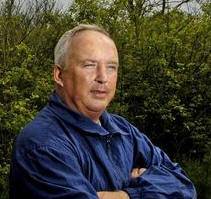 |
|
"I know what I saw," said David Brock, 48, who worked as a busboy and now
lives in Independence. "My mom always told me to tell the truth."
The morning of the fire, Brock prepared the Zebra Room for a small wedding party
that night.
About 10:30 a.m., he said, he was
greeted by two men in blue jeans and long-sleeved shirts working on wiring in
the chandelier and ceiling. They had no name tags and said they were working on
the air conditioning, he said.
"They were agitated I kept coming in," Brock said. "They would tell me to go
away and come back."
Not until after the fire did Brock realize there was no air-conditioning unit in
the Zebra Room.
Brock maintains that the Schilling family, which owned the club, told him they
never contracted for any maintenance that day in the room.
Rick Schilling Jr., reached by phone at his home in Boca Raton, Fla., said he
has never heard about workers in the Zebra Room on the day of the fire.
Schilling ran Beverly Hills with his late father and two brothers, Ron and
Scott. Rick Schilling declined to talk further about the fire because of
subsequent lawsuits and settlements between the Schillings and fire victims.
After 8:30 p.m., the Zebra Room became
an inferno and was the ignition site of the fire.
"I was interviewed at a Holiday Inn in Fort Mitchell four days after the fire by
investigators," Brock said. "They said there is no credibility to it. I'm
telling you on a stack of Bibles it happened. We told the investigators it. They
had a different theory of it. When they were first looking at the fire, they
weren't interested in anything else except focusing on the Schillings."
Brock said he has wondered about the identity of the two maintenance workers.
The younger one, in his early 30s, stood 6-foot-4 with dark hair and dark
mustache. The other in his 50s, was shorter and stocky and bald.
"What would happen if they found out who those guys were?" Brock said.
Six others saw these mysterious workers,
but at least three are dead and others have moved and can't be located, Brock
said.
Except for Shirley Baker Turner,
who broke her silence last year to tell her story about what she saw at the club
leading up to the fire.
At the time of the fire, Turner was a 21-year-old banquet waitress at the club.
After the fire, she claims she was a
mother of two receiving death threats to keep quiet about what she saw at the
club. She now lives in Harrodsburg, Ky.
On hilltop, history remains
Beverly Hills Supper Club site gives a glimpse into N.Ky.'s past
BY SCOTT WARTMAN | SWARTMAN@NKY.COM
E-mail | Print | digg us! | del.icio.us!
The is one of a series of articles commemorating the 30th anniversary of the
Beverly Hills Supper Club fire.
SOUTHGATE - Some refer to the 78-acre
hilltop where the Beverly Hills Supper Club stood as the Cincinnati area's
Titanic.
Incredibly, much from the tragic night of May 28, 1977, remains on the site.
A lack of development for 30 years has allowed bushes to spread over a good
portion of the worn driveway and cover the area where the nightclub stood.
But amid the roots and under the deer tracks rest the remnants of the nightclub
and some of the personal items of those who were there the night it burned.
A rotted dress shoe with what appears to be singe marks can be seen in a pile of
debris at the crest of the long driveway.
Broken cups and plates from the dining room litter the earth, rain and erosion
still turning up new relics.
A Fresca bottle with a 1976 expiration date lies in the undergrowth as it likely
has been for 30 years.
Visitors have found beer bottles with caps melted on and beer still inside.
"This stuff keeps washing up," said Wayne Dammert, a waiter and banquet captain
in 1977.
Dammert occasionally visits the site to tend to the memorial crosses he has
mounted, the last in early May. The current one is about 25 feet high and is
visible from Interstate 471.
In boxes at Dammert's Alexandria home are singed menus and records he salvaged
right after the fire. In subsequent visits over the past 30 years, he has found
ornate candelabras that hung on the wall of the Cabaret Room, the club's largest
room where the shows were held. A trip to the site this year brought back a
rusted table from that room.
Many more remnants likely lie underground.
Some who worked at Beverly Hills say much of the equipment used during Newport's
gambling days from the 1930s through 1960s was stored in the basement.
"The basement didn't get burned. They bulldozed everything over it," Dammert
said.
The site is not fair game for those who want to go excavate, says Connie
Schmitt, vice president of marketing and public relations for Life Enriching
Communities, which owns the site. She says no one should be going up there
unless they have permission from her company.
"It's private property and people shouldn't be going up there," Schmitt said.
"It's not a safe site. There's potential for people getting hurt."
Schmitt said there has never been a need to monitor the area until the 30th
anniversary approached. She hopes that no-trespassing signs are enough. She said
there also has never been a need to have police involved, but that might change.
"If it does become a free-for-all, we will have to take some action," she said.
The site fascinates Independence resident Dave Horn and his two sons, Nick, 8,
and Justin, 16. They have gone up to the site many times and brought back broken
china and silverware.
Horn collects memorabilia from Newport's days as a
gambling
mecca. Menus, posters, dice and
other effects from Northern Kentucky casinos and nightclubs adorn his home.
Nick spends hours reassembling china from the Beverly Hills site.
One spoon is fused to a serving tray. Another spoon has been surrounded by a
root.
Horn said Nick can point to where each of the rooms of the Beverly Hills were on
the site.
Horn said he sees a need to preserve many of these artifacts if and when the
site is finally developed.
"When they do anything up there, it will be all bulldozed away," Horn said.
"If there is ever a museum in Northern Kentucky for the Beverly Hills, they
should have these artifacts."


Bosses |
|||
Joseph Lonardo
|
 |
The founder of the Cleveland Mafia. Born in Licata, Sicily emigrated to New York in 1901, then to Cleveland in 1905. He was the leader of his clan that thrived when Prohibition came around in 1920. His clan got rich and by 1925 he had made himself the first godfather of the Cleveland Mafia. To make booze they used corn sugar, nicknamed the corn sugar baron. But when he fired his financial wizard Salvatore "Black Sam" Todaro, Todaro had him hit. He was killed along with his brother John in the back of the Porello barber shop on October 13, 1927. This sparked the Sugar War. | |
Salvatore "Black Sam" Todaro
|
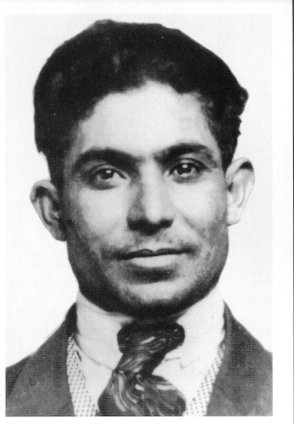 |
After Joe Lonardo fired him, Black Sam resorted to the only one solution. After he had Lonardo murdered, he became the boss of the Cleveland Family. He had ties to New York with such people as Joe Masseria during the Castallamrese Wars. His reign was short, when the son of his victim, Angelo Lonardo. On on June 11, 1929, Angelo drove his mother to Black Sam's area so she could talk with him. As Todaro approached, Lonardo pulled out a gun and fired five deadly bullets into his chest. "Black Sam" Todaro was no more. | |
Joseph Porello
|
 |
Self appointed himself Cleveland boss after Todaro's murder, the Lonardo and Porello families were friends back to Licata, Sicily. But Joe Porello's reign as Cleveland syndicate boss would be short lived. The Mayfield Road Mob lead by Frank Milano was gaining power, so Porello sought to merge, but at this meeting in 1930, confusion broke out and Milano's men killed Porello along with Sam Tilloco. | |
Frank Milano
|
 |
With the death of Joe Porello he became boss, and after the bombing of Jim Porello's house, the Porello's retired from the corn sugar industry. Giving Milano's Mayfield Road mob a monopoly. In 1931, at Luciano's reconstruction of La Cosa Nostra, he was one of the seven original members of "The Commision". In 1934 though, about to be tried for income tax evasion like Al Capone, Milano packed his bags and fled to Vera Cruz, Mexico. | |
Dr. Joseph Romano
|
Milano left Polzzi in charge but this high ranking man ended up boss for a short time. A respected surgeon, Dr. Romano was also secretly a member of the Cleveland Mafia. But it was short reigned though, on June 11, 1936, he was found brutally murdered in the back of a car. Angelo Lonardo was behind the hit. | ||
Alfred Polizzi
|
With Romano gone, Polizzi took over. Along with Moe Dalitz, Polizzi provided a young entrepeneur Wilbur Clark to complete the Desert Inn in Vegas. This gave Cleveland a piece of Las Vegas. But Polizzi no longer wanted in with the racket and retired to Florida in 1944. | ||
John Scalish
|
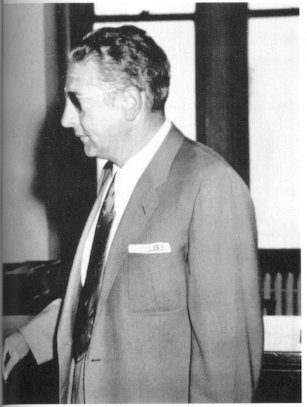 |
Ruled the Cleveland Mafia from Polizzi's retirement in 1944 until his death from heart surgery in 1976. He was a very powerful man and at one time said to be a member of the commision. He also was involved in Casino skimming. He also received 25 percent of the profits from Pittsburgh's Youngstown vending and gambling businesses. But many people say it was his fault for the start of the decline of the Cleveland Family. One of the problems was that he didn't make any new members. This really hurt the Family in the long run. The other big problem with Scalish was with speculation about who he appointed his successor. Several people felt he should have appointed his brother-in-law Angelo Lonardo, but according to Scalish's other brother-in-law, Milton Rockman, John had appointed the elder James Licavoi. | |
James Licavoli
|
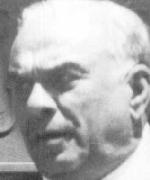 |
Successor to Scalish, some believe Milton Rockman lied about Scalish' choice of successor because Rockman was closer to Licavoli than Lonardo. He lead a rather sloppy reign. He went to war with Irish gangster Danny Greene and his allie Chris Nardi. Licavoli's Underboss Leo Moceri was killed during the war, but Licavoli would win out when Nardi was killed on 5/17/77 y a bomb in his car and Greene was blown up on 10/6/77. with the murder of Irish mobster Danny Greene leading so easily to the Cleveland Mafia. During his reign, 31 people were killed because of gangland war. Licavoli and most of the Family was convicted on racketeering charges in 1982. He would continue to run the Family, with Tronolone being the Acting Boss, from prison until 1985, when he died in prison. | |
John "Peanuts" Tronolone
|
 |
Became boss when Licavoli died, "Peanuts" was very close to the Genovese Family in New York. Tronolone controlled his Family from his home in Miami beach. He was exspected to move back to Cleveland and revive the very weakened Family, but he never did. In 1985, Tronolone and 14 others was indicted in racketeering charges but all were acquitted. In 1989 Tronolone would be convicted of racketeering, loan-sharking, and dealing in stolen property. In 1991, John Tronolone died in Miami Beach from heart problems. Many people said with the death of Tronolone went entire Cleveland Family. According to the FBI their is no longer a family in Cleveland but this view is not shared by some people. | |
Joseph "Joe Loose" Iacobacci
|
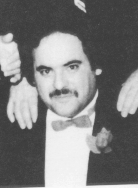 |
When John Tronolone died in 1991 it was said the Cleveland Family was no more but with Joseph "Joe Loose" Iacobacci still around, it is debateable. Joe Iacobacci is a recognized member of La Cosa Nostra and continues his involvement in organized crime. In 1996 "Joe Loose" and Alfred "Allie" Calabrese were sentanced to 30 months for his federal conviction in a scheme to defraud $3 million from several New Jersey banks. He was recently released in 1998. Iacobacci has severed time for drug and gambling convictions. He is one of the last remainding crime figures to ever be apart of the Cleveland La Costra Nostra. It is said that "Joe Loose" leads a family at an estimated membership of 5 "made" members, a major down drop then what is was 15 years earlier. Iacobacci's Family is involved in gambling and fencing operations. Recently, Alfred "Allie" Calabrese died in jail when he received several blows to the head by another inmate. Calabrese was a close associate of "Joe Loose". He survived but was but on life support and died when he was taken off it on 8-11-99. | |
Underbosses |
|||
Frank "Little Frank" Brancato
|
 |
Frank "Little Frank" Brancato oiginally started out in NYC as a longshoreman on the Brooklyn docks. By 1932 it was clear that he was an upcoming wiseguy in Cleveland, when he found himself in a Doctor's office to remove a bullet, and it was found to match one of the guns used by mob bosses Raymon and Rosario Porrello while they were being murdered. When question about the incident, he refused to speak and was jailed for contempt. After a few years being incarcerated he was released. It is believed that this is when he became a "made" member of the Cleveland LCN Family. By the early 1940s, Brancato and future boss Jack Lacovelli owned a brothel and later a casino called "The Jungle Inn". Their operation, which was based in Youngstown, OH, was shut down in 1949. Throughout the 1950s Brancato would continue to derive most of his earnings from illegal gambling and loansharking.By the mid 1960s Brancato was attempting to control the garbage hauling in Cleveland. He ran into problems and needed muscle for his operations.He sought out Irish racketeer Danny Greene. The Irish gangster would causea major war within Cleveland LCN Family during the mid 1970s which pretty much ended the family's power. Brancato would always be blamed for his "mistake" in introducing Greene to the Cleveland rackets. Brancato died in 1973 from natural causes. A 1988 Senate Hearing produced evidence that showed Branca to was the underboss for then boss John Scalish until his death. It is unknown when he actually began serving as the number two man under Scalish. | |
Cologero "Leo Lips" Moceri
|
 |
Calogero "Leo,Lips" Moceri first "made his bones" (murdered) for then LA Boss Jack Dragna. Afterwards, Moceri settled in the Akron, OH area and made a fortune from local bootlegging/gambling rackets. His partner and cousin was James "Jackie White" Licavoli. It is said that Leo Moceri instilled fear in many and was well-respected by LCN families from coast to coast. Moceri was also heavily involved in loan sharking,gambling rackets derived from Cleveland's Little Italy festivals, held interest in various business, and real-estate. In contrast Moceri was also known to be rather cheap and as so far as using slugs in pay phones to conduct business. Moceri was chosen to fill the spot as underboss for Licavoli. It would be shoert lived. After a very open argument with, union boss and partner of Irish racketeer Danny Greene, John Nardi over gambling profits, and other problems he was killed. In late August of 1976, Moreci's Mercedes was found abandoned, and with trunk soaked in blood. His body was never found. | |
Angelo Lonardo
|
 |
The son of the founding boss, Angelo got involved in the criminal empire when killing Black Sam Todaro to avenge his father's murder. He was convicted but later aquitted for this murder. Rising through the ranks to become Underboss he was the Mafia's biggest disappointment yet. In 1983, when faced with a life sentence, Lonardo turned government witness, being the highest ranking Mafiosi to flip. Lonardo basically destroyed the whole Cleveland LCN. | |
Consiglieres |
|||
John DeMarco
|
 |
Many consider Anthony Milano as one of the original consigliere of the Cleveland LCN Family. It is true that Milano, a high ranking and elder member did serve as counselor to the crime family. He would also serves underboss for John Scalish after the death of long time member Fank "Little Frank" Brancato. In either role Milano was seen as an interim or retired member. His roles were more held more out of respect than actual functioning. What is known about the role of consigliere within the Cleveland LCN Family, was the John DeMarco is believed to have served the role until his death 1972 and he considered to be highly respected.DeMarco, a cousin to original boss Joe Lonardo, was a native of Licata,Sicily and would lead a gang known as the "Licatese faction". This faction was successfully merged with the Mayfield Road Mob under then boss Frank Milano and the combination resulted in the Cleveland LCN Family.DeMarco would continue to serve in various adminstration roles at various times. He died on October 25, 1972 from natural causes. DeMarco was believed to have served as counselor or consigliere through much of John Scalish's reign. | |
Caporegime |
|||
Thomas J. Sinito
|
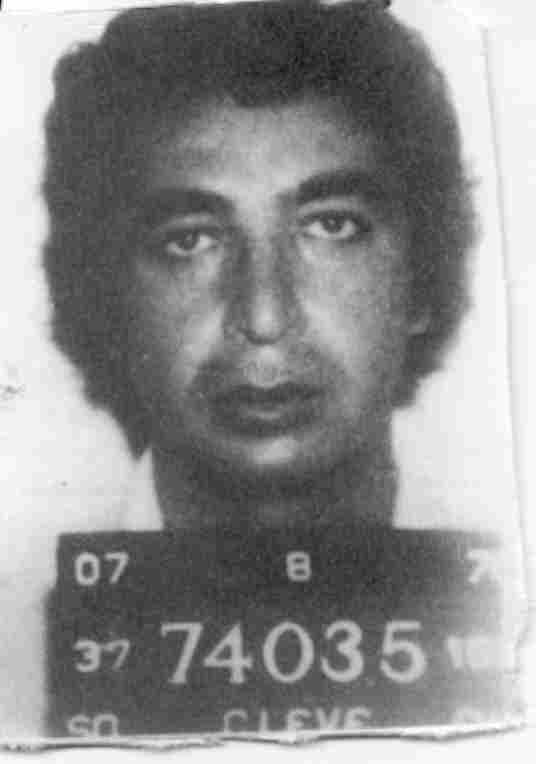 |
Thomas J. Sinito was a top liuetenant under then capo Angelo "Big Ange"Lonardo. When Lonardo was promoted to underboss in 1976, Sinito was made capo over hi crew. Sinito derivd a bulk of his earnings from vendingmachine rackets within the city of Cleveland. Later he would become part ownerof an amusement park in Valley Forge, PA. After the bombing death of Irish racketeer and LCN enemy Danny Greene, Sinito became heavily involved inthe drug trade. Despite the "no drugs" rule, he did so with the blessingsof boss Jack Lacovelli and Lonardo. The drug racket was overseen byCleveland mobster Carmen Zagaria. In the early 1980s, Sinito was convicted onmultiple racketeering charges, with most of the Cleveland LCN Family, and one conviction was for the murder of David Perrier. Sinito died in prisonin 1997. He was 59. | |
Anthony "Tony Lib" Liberatore
|
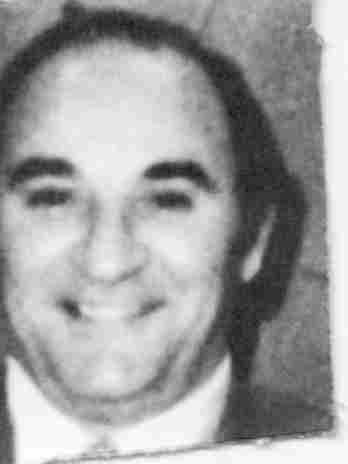 |
Anthony "Tony Lib" Liberatore was once considered "boss material" forthe Cleveland LCN Family. He had previously served close to 20 years for a double homicide conviction. He was relased in late 1974 and by 1975 waselected business manager of the Local 860 Union. Cleveland Mayor RalphPerk even appointed him to Cleveland's Regional Sewer Board. In June 1977, Liberatore assembled a hit team, for back up measures, as precaution tomurder Irish gangster and Cleveland LCN Family enemy Danny Greene. His attempts weren't needed and the bomb was detonated successfully. In1981, Liberatore was convicted on racketeering charges and bribing asecretary that worked for the FBI. He was released in 1990. In 1993 he was convicted of money laundering and sentenced to 10 years. Tony Liberatore died in prison in 1996. | |
Soldiers |
|||
Eugene "The Animal" Ciausullo
|
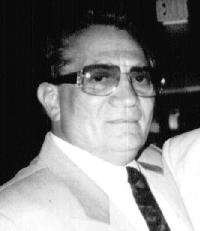 |
Eugene "The Animal" Ciausullo was a well-respectd soldier and soldier of the Cleveland LCN Family. He was also well known through La Cosa Nostra families from coast to coast. Before the days of ATMs, gamblers at Lake Tahoe casinos, gamblers would often received money from them if they had dried up their pockets. Since the loan wasn't legal, the casinos could not legally seek out what was owed to them and would have to take a loss. This is where Ciausullo came in with his baseball bat. Ciausullo would go to the ends of the earth to collect. By the mid 1970s, Ciausullo was suspected in numerous mob related murders and assaults. He was also doing well in a loanshark racket with Cleveland LCN Family capo Thomas Sinito. On July 21, 1976 members of the Hell's Angels Motorcycle Gang, hired by Irish gangster Danny Greene, attempted tomurder him with a bomb placed on his front porch. Miracously he survived and declined to help in fighting a war against Greene. As of 1999,Ciausullo is believed to be "retired" and resides in Florida and Pennsylvania. He has served very little jail time through out his career. | |
Ronald "Ronnie the Crab" Carabbia
|
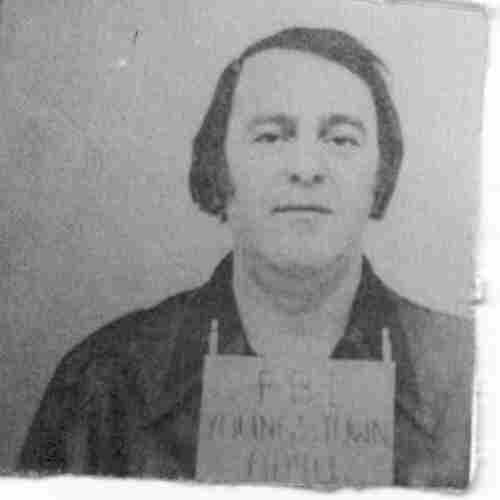 |
Ronald "Ronnie the Crab" Carabbia was one of three brothers that over saw gambling rackets based in Warren and Youngstown, OH for the Cleveland LCN Family. Carabbia along with mobsters Pasquale "Butchie" Cisternino and Ray Ferrito were finally able to kill Irish racketeer Danny Greene in June 1977. Ferrito would later cooperate with the government and testify against them. Carrabia would be sentenced to life for the murder of Greene. As a result of his absence from Warren and Youngstown, the Pittsburgh LCN Family was able to gain full control of the rackets and they are the current dominantforce within the area. | |
Pasquale "Butchie" Cisternino
|
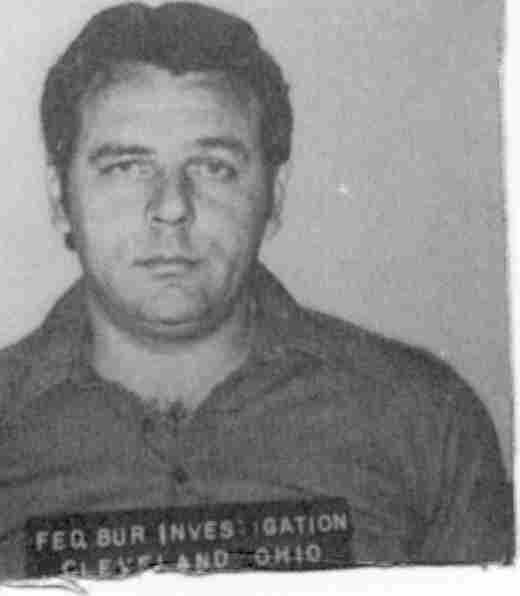 |
Pasquale "Butchie" Cisternino began his "career" in the Cleveland LCN Family by passing protection money from a Greek dice game he controlled in Cleveland's Little Italy. Every week he would pass up a portion of the earnings to mob boss Jack "Jackie White" Licavolli. Later he would enter into a burglarly ring with Cleveland mob enforcer Eugene "The Animal" Ciausallo. The duo would also established a lucrative loan shark racket together.After the 1976 bombing attempt on Ciausallo, Cisternino sought revenge for his friend and would stand guard while recovered in the hospital. Cisternino, considered a "street expert" in explosives, built the bomb that killed Danny Greene's partner John Nardi on May 17, 1977 and Green in June of the same year. For these crimes and others, Cisternino was sentenced to life and would die in prison from pancreatic cancer in 1990. He was 56. | |
Associates |
|||
John Nardi
|
 |
John Nardi was born Giovanni Narcchione in Cleveland, in 1916. He began his criminal career as muscle for the vending machine workers union. Later he would represent his uncle Tony Milano; who was the long time retired consigliere of the Cleveland LCN Family interests. He would also become good friends and business partners with Ohio Teamsters official Bill Presser.By the 1940s Nardi would become a member of the Teamsters Vending Machine Service Employees Local 410 and would also be elected to its position of secretary-treasurer. Nardi was also forming tis with future Los Angeles underboss and Cleveland resident Aladena "Jimmy the Weasel" Fratiano while attending the Italian-American Brotherhood Club. The two also became friendly with many Cleveland mobsters. Nardi, who seemed to be a shoe-in for greatness with Cleveland mob,couldn't wait to be "made" and refused to pay tribute to the la cosa nostra family. His rackets included drugs, extortion, labor racketeering, illegal firearms, illegal gambling and loan sharking. By the late 1960s Nardi's partner wasn't the local LCN but rather Irish racketeer Danny Greene.Nardi, due to his association with Greene and his ever growing independence, was making plenty of enemies. His most well known of these was then Cleveland LCN underboss Leo Moceri. Nardi contended that he was owed apiece of the gambling rackets from Cleveland's Little Italy Feast of Assumption. Moceri publicly denied his claim and threats were exchange. Nardi, who along with Greene, had previosuly ordered the murder of Cleveland mob associate John Conte, and the duo also ordered the murder/dissapearance of Moceri. In August of 1976 Moceri's Mercedes sports car was found soaked in blood and his body never recovered.The Moceri dissapearance was seen as a major embarassment on the part of the Cleveland LCN Family. Th crime family wanted revenge. John Nardi, who wasn't considered a member of Greene's Celtic Club but rather his partner, was killed on May 17, 1977 by a car bomb. | |
http://mafiascene.com/forum/viewtopic.php?t=12286&postdays=0&postorder=asc&start=30 .... mobsters
http://news.cincypost.com/apps/pbcs.dll/frontpage ...... good coverage
http://mfile.akamai.com/12885/wmv/vod.ibsys.com/2007/0525/13391018.200k.asx video of semi trucks picking up bodies
http://www.wlwt.com/slideshow/news/13378463/detail.html
|
|||
|
|
 |
|
|
|||
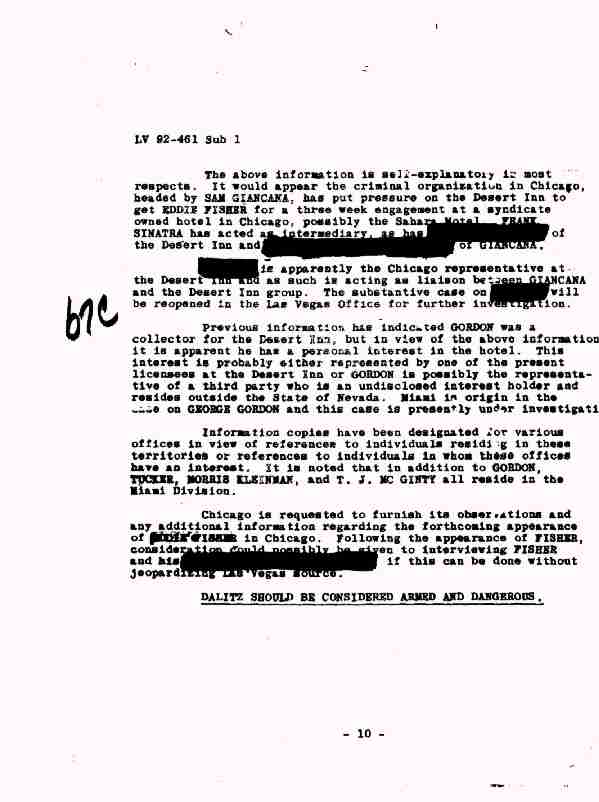 |
|||
 |
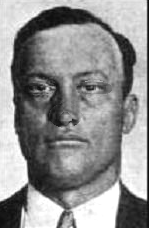 |
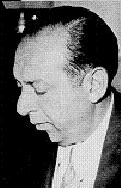 |
 |
| Kleinman | Samuel Tucker/Taubstein | Louis Rothhopf | Moe Dalitz |
| Beverly Hills | |||||||||||||||||||||||||||||||||||||||||||||||||||||||||||||||||||||||||||||||||||||||||||||||||||||||||||||||||||||||||||||||||||||||||||||||||||||||||||||||||||||||||||||||||||||||||||||||||||||||||||||||||||||||||||||||||||||||||||||||||||||||||||||||||||||||||||||||||||||||||||||||||||||||||||||||||||||||||||||||||||
|
|||||||||||||||||||||||||||||||||||||||||||||||||||||||||||||||||||||||||||||||||||||||||||||||||||||||||||||||||||||||||||||||||||||||||||||||||||||||||||||||||||||||||||||||||||||||||||||||||||||||||||||||||||||||||||||||||||||||||||||||||||||||||||||||||||||||||||||||||||||||||||||||||||||||||||||||||||||||||||||||||||
| The above is from a government document - An Investigation of Organized Crime in Interstate Commerce, in 1951. The hearings were also know as the Kefauver Hearings. | |||||||||||||||||||||||||||||||||||||||||||||||||||||||||||||||||||||||||||||||||||||||||||||||||||||||||||||||||||||||||||||||||||||||||||||||||||||||||||||||||||||||||||||||||||||||||||||||||||||||||||||||||||||||||||||||||||||||||||||||||||||||||||||||||||||||||||||||||||||||||||||||||||||||||||||||||||||||||||||||||||